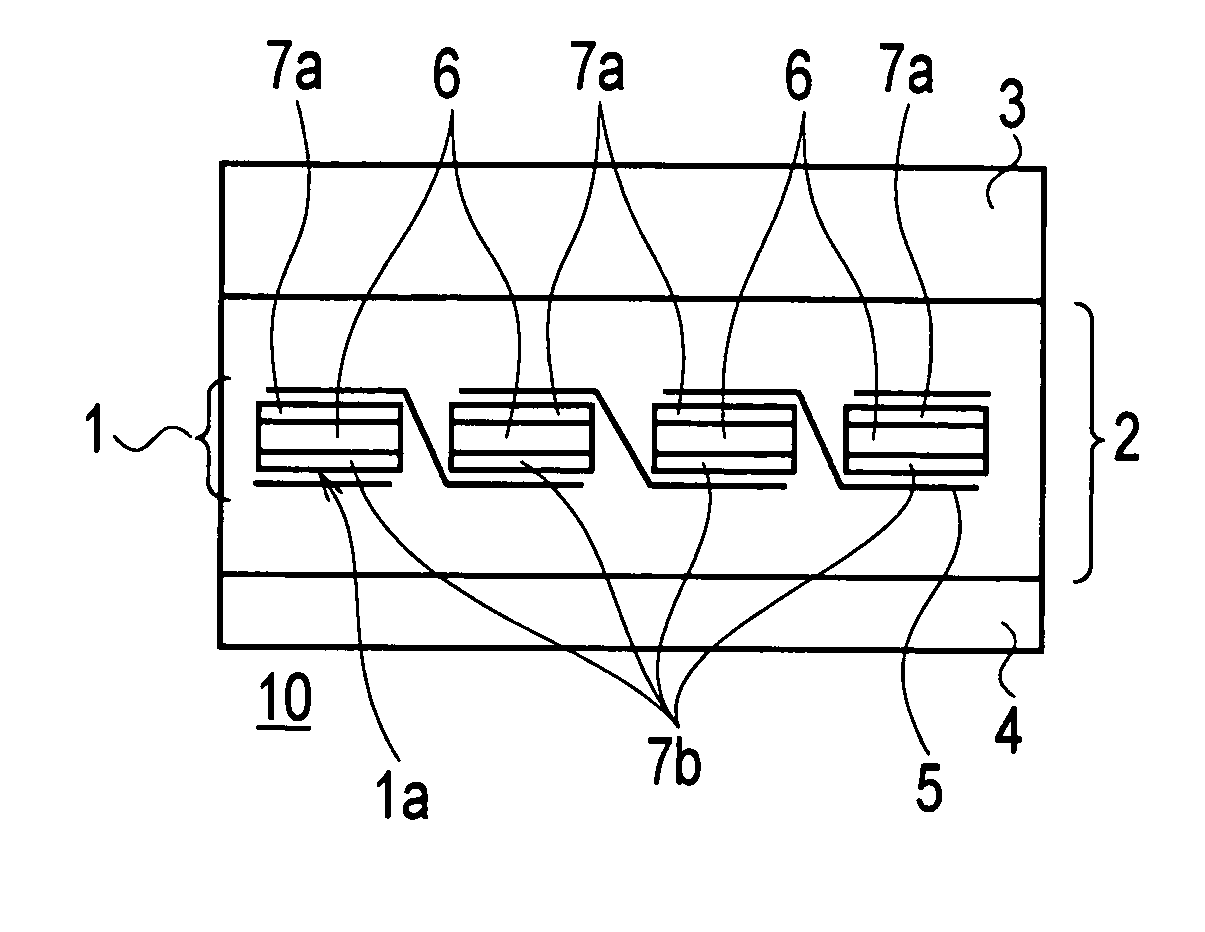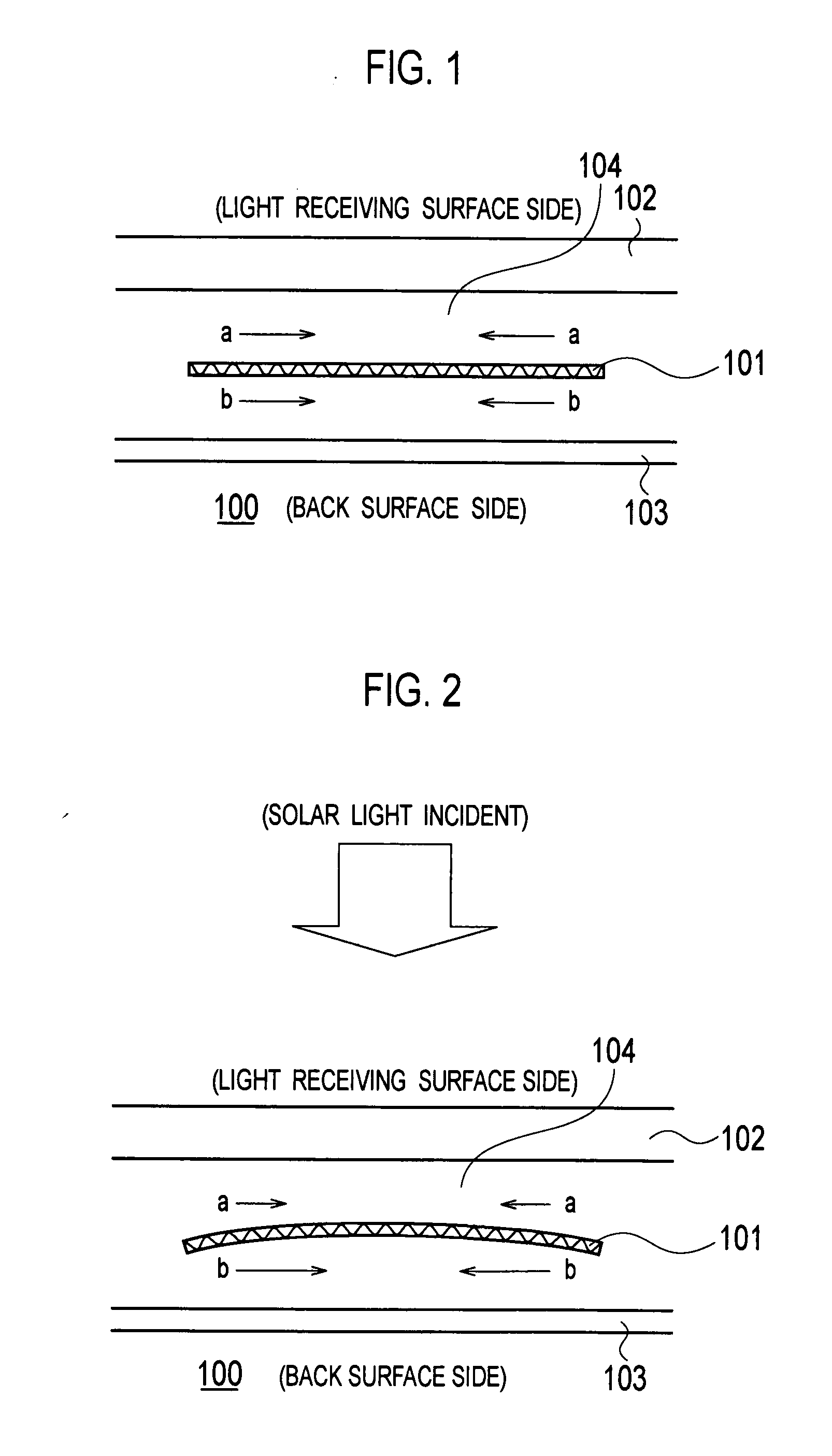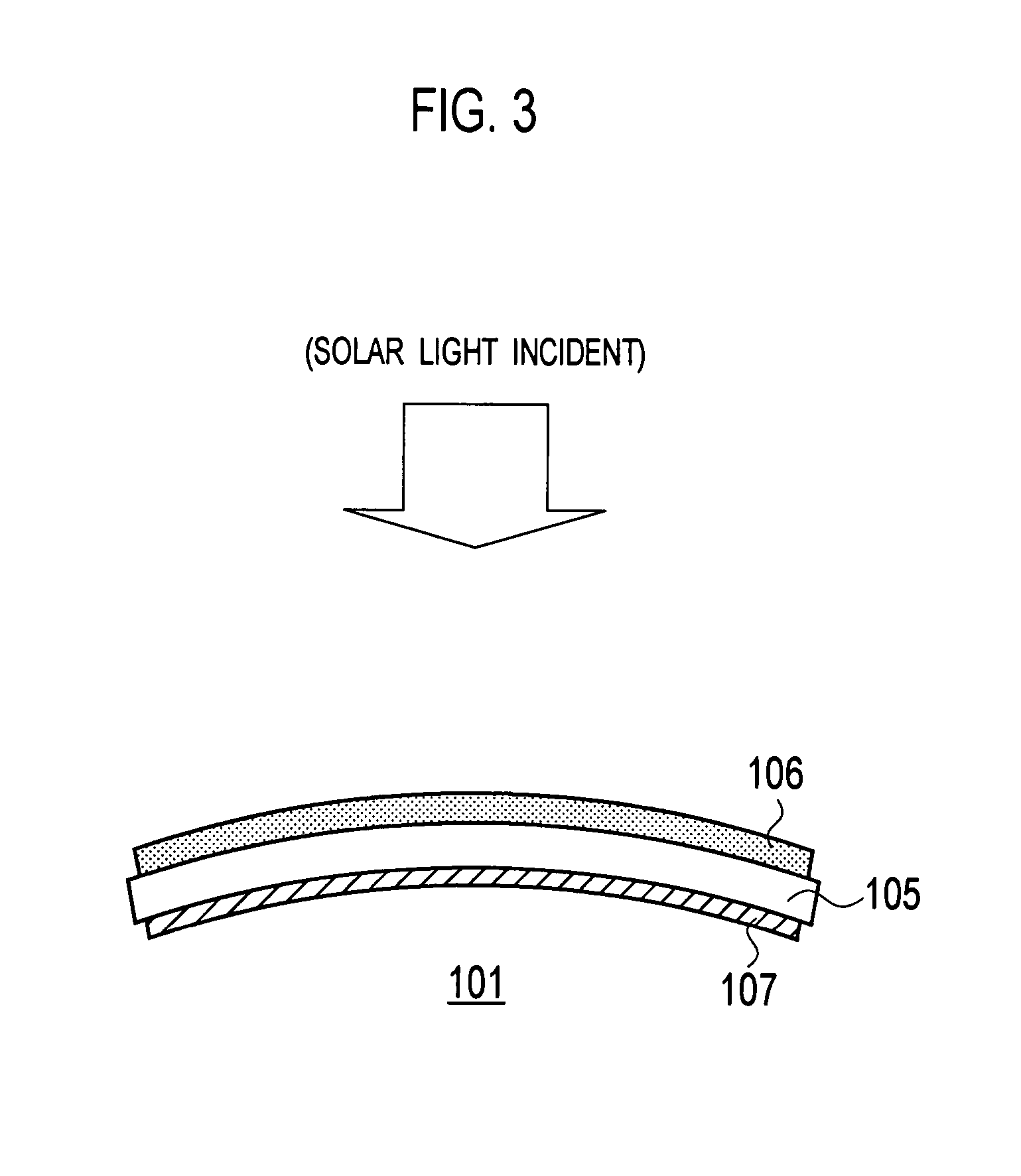Photovoltaic module and method for manufacturing photovoltaic module
- Summary
- Abstract
- Description
- Claims
- Application Information
AI Technical Summary
Benefits of technology
Problems solved by technology
Method used
Image
Examples
examples
[0080] Hereinafter, the photovoltaic module of the present invention will be described specifically by taking examples. The present invention is not limited to the below-described examples, and any appropriate modification can be made as long as the spirit and scope of the invention are not changed.
[0081] In the first place, a relationship between a temperature in the crosslinking process and the degree of cross-linkage was examined by using an EVA sheet as a sealing material sheet. Firstly, a glass plate, an EVA sheet with the thickness of 0.6 mm and a PET film were placed in this order on a mounting table of a lamination apparatus. Secondly, these materials are heated under reduced pressure at a temperature of approximately 120° C. for 10 minutes. In this way, the air was released, and the temporary adhesion was completed. Note that the temperature of approximately 120° C. is lower than the crosslinking temperature of the EVA. Thirdly, the sample in a temporary adhering state was...
example 1
[0087] A sample of an example 1 was fabricated by performing the laminating process for 10 minutes, the first curing process for 0 minute, and the second curing process for 45 minutes.
[0088] In other words, in the sample of the example 1, the sealing material on the light receiving surface side was heated at the temperature of 150° C. for 45 minutes, while the sealing material on the back surface side was heated at the temperature of 150° C. for 0 minute. Hence, from the foregoing result shown in Table 2, it can be assumed that the gel fraction of the sealing material on the light receiving surface side is approximately 87%, and that the gel fraction of the sealing material on the back surface side is approximately 0%.
example 2
[0089] A sample of an example 2 was fabricated by performing the laminating process for 10 minutes, the first curing process for 5 minutes, and the second curing process for 40 minutes.
[0090] In other words, in the sample of the example 2, the sealing material on the light receiving surface side was heated at the temperature of 150° C. for 45 minutes, while the sealing material on the back surface side was heated at the temperature of 150° C. for 5 minutes. Hence, from the foregoing result shown in Table 2, it can be assumed that the gel fraction of the sealing material on the light receiving surface side is approximately 87%, and that the gel fraction of the sealing material on the back surface side is approximately 13%.
PUM
 Login to View More
Login to View More Abstract
Description
Claims
Application Information
 Login to View More
Login to View More - R&D
- Intellectual Property
- Life Sciences
- Materials
- Tech Scout
- Unparalleled Data Quality
- Higher Quality Content
- 60% Fewer Hallucinations
Browse by: Latest US Patents, China's latest patents, Technical Efficacy Thesaurus, Application Domain, Technology Topic, Popular Technical Reports.
© 2025 PatSnap. All rights reserved.Legal|Privacy policy|Modern Slavery Act Transparency Statement|Sitemap|About US| Contact US: help@patsnap.com



